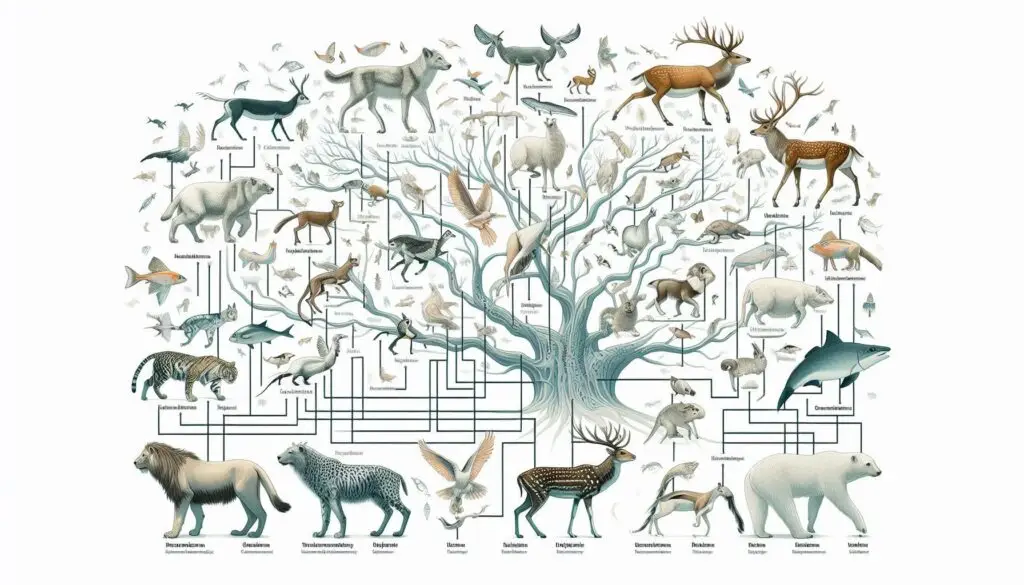Inbreeding Depression in Large Herds

Introduction
Inbreeding depression is a critical issue affecting the health and productivity of livestock and wildlife populations. It occurs when closely related individuals breed, leading to a decrease in genetic diversity. This article explores the consequences of inbreeding depression in large herds, emphasizing its impact on reproductive success, health issues, and overall population viability.
What is Inbreeding Depression?
Inbreeding depression refers to the reduced biological fitness of a population due to increased homozygosity. When closely related animals mate, they are more likely to share deleterious alleles, which can lead to various health problems. This phenomenon is particularly concerning in livestock species where breeding practices often prioritize specific traits over genetic diversity. For more information on this topic, check out Understanding Inbreeding Depression.
How Inbreeding Occurs
In large herds, inbreeding can happen for several reasons:
- Limited Breeding Options: When the number of breeding individuals is low, related animals may mate.
- Selective Breeding Practices: Focusing on specific traits can inadvertently reduce genetic variation.
- Population Bottlenecks: Events that drastically reduce population size can lead to increased inbreeding.
Consequences of Inbreeding Depression
1. Reduced Reproductive Success
One of the most immediate effects of inbreeding depression is a decline in reproductive success. Studies have shown that increased levels of inbreeding can lead to smaller litter sizes and lower fertility rates. For instance, research indicates that a 10% increase in the level of inbreeding can result in a 2.5% reduction in the number of piglets born per litter. This decline can severely impact herd productivity over time. For further reading on reproductive success, see The Role of Inbreeding Depression on Productive Performance.
2. Increased Health Issues
Inbred animals often suffer from various health problems. These may include:
- Higher Mortality Rates: Inbred offspring may experience increased stillbirths and congenital defects. For example, Swedish adders isolated from other populations showed higher rates of stillborn and deformed offspring due to inbreeding.
- Weakened Immune Systems: Reduced genetic diversity can impair an animal’s ability to fight diseases, making them more susceptible to infections.
3. Decline in Growth and Performance
Inbreeding depression can negatively affect growth rates and overall performance. Research on dairy cattle has shown that increased inbreeding correlates with reduced milk yield and fertility. The cumulative effect can lead to significant economic losses for farmers. For insights into livestock performance, refer to Inbreeding Depression: Effects on Animals.
4. Genetic Load and Long-term Viability
The concept of genetic load refers to the burden of deleterious alleles within a population. As inbreeding increases homozygosity, harmful recessive alleles become more prevalent. This accumulation can hinder a population’s ability to adapt to environmental changes, posing long-term risks for survival.
5. Outbreeding Depression Risks
While introducing unrelated individuals (outcrossing) can mitigate some effects of inbreeding depression, it carries its own risks. Outcrossing may lead to outbreeding depression if introduced individuals are genetically too different from the local population. Thus, careful management is essential when considering genetic rescue strategies.
Case Studies
1. Swedish Adders
A notable example involves Swedish adders (Vipera berus), where isolated populations experienced severe inbreeding depression due to limited mating options. The introduction of adders from other populations resulted in improved reproductive success and reduced deformities.
2. Dairy Cattle
In dairy cattle, studies have documented significant declines in productive traits due to inbreeding depression. For instance, research indicated that as genetic selection increased for yield traits, the associated rise in inbreeding led to reduced resilience and reproductive performance.
3. Pigs
In pig herds, rapid increases in the level of inbreeding have resulted in substantial declines in both litter size and growth rates. This highlights the importance of monitoring genetic diversity within breeding programs.
Management Strategies
To mitigate the effects of inbreeding depression, several strategies can be employed:
1. Monitoring Genetic Diversity
Regular assessments of genetic diversity within herds are crucial. Tools such as pedigree analysis and genomic evaluations can help identify levels of homozygosity and guide breeding decisions.
2. Implementing Outcrossing Programs
Introducing unrelated individuals into breeding programs can enhance genetic diversity. However, it is essential to select mates carefully to avoid outbreeding depression.
3. Educating Breeders
Educating livestock breeders about the risks associated with inbreeding is vital for promoting sustainable practices. Understanding the long-term implications can encourage more responsible breeding decisions.
Conclusion
In summary, the consequences of inbreeding depression are profound and multifaceted. From reduced reproductive success to increased health issues and long-term viability concerns, managing genetic diversity is essential for maintaining healthy populations. By implementing effective management strategies and promoting awareness among breeders, we can mitigate the risks associated with inbreeding depression.
For further reading on this topic, you may explore these resources:
More from Genetics and Animal Breeding:
Quantitative and Qualitative Traits
Gene and Genotypic Frequencies
Mutation: Types, Detection and Transgenesis
Recombinant DNA Technology: Transforming Science and Technology






Responses